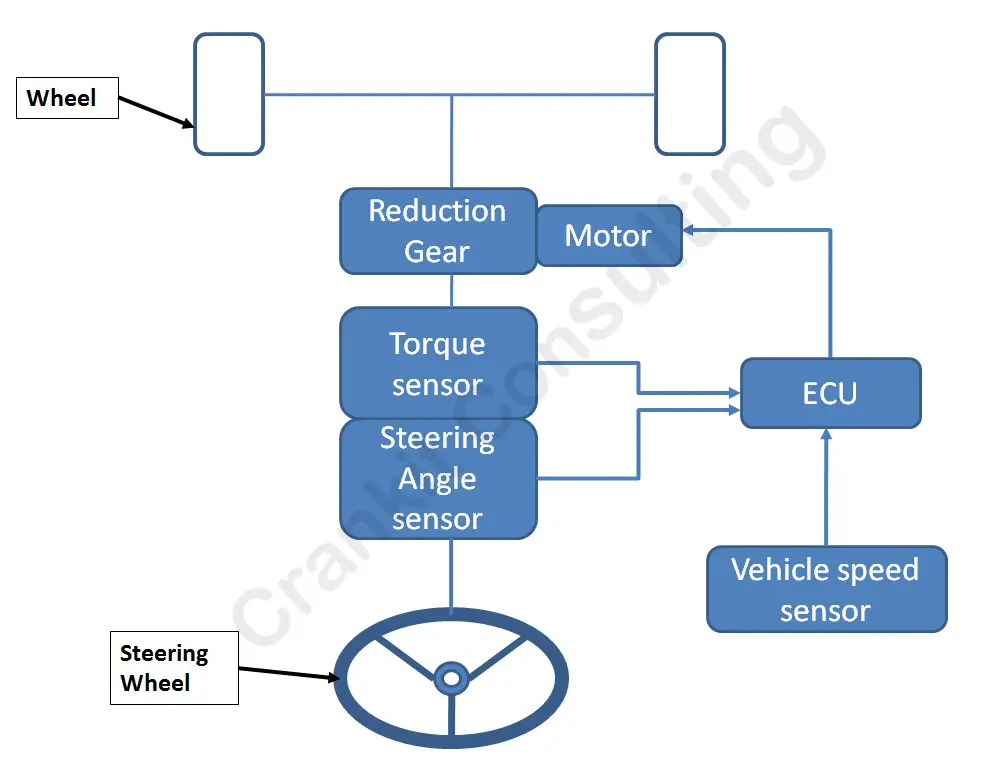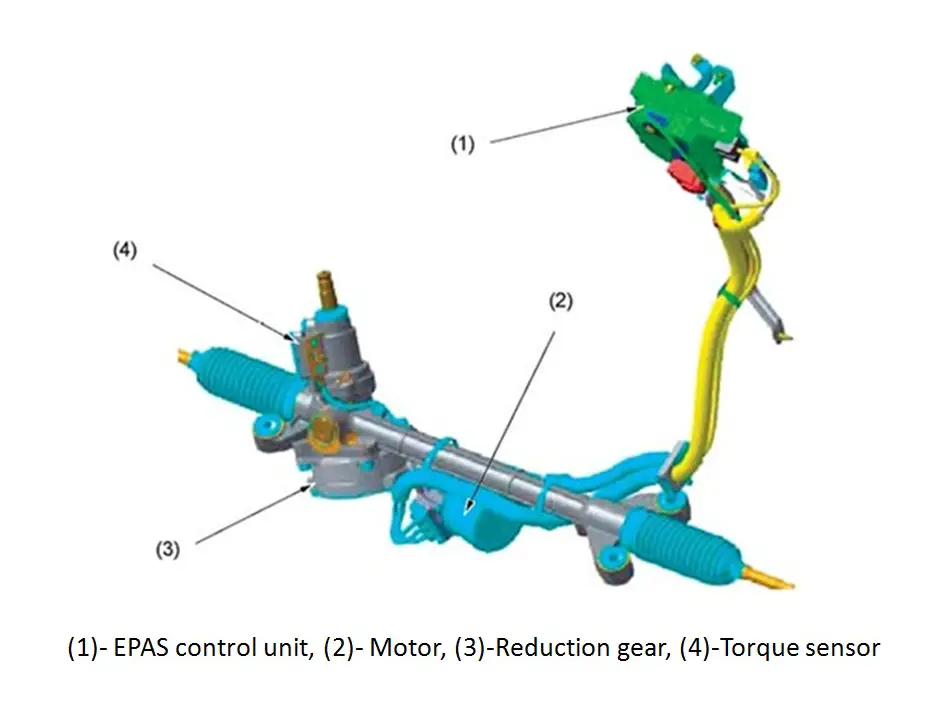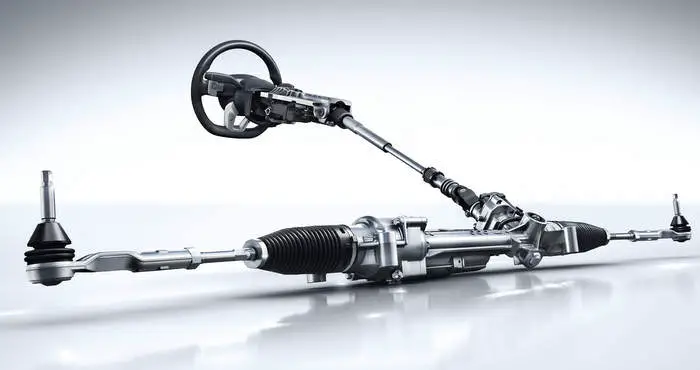Electric Power Steering Working
EPAS stands for Electric Power Assisted Steering. Electric Power Steering (EPS) is the another name for EPAS. In almost all modern vehicles, Electric Power Steering is in use. The main purpose of any type of power steering system is to attenuate the driver effort required to steer the vehicle i.e. the torque applied on the steering wheel and it uses electric motor for the same purpose.
Construction & Working:
Furthermore, steering angle sensor and Torque sensor measure the position of steering wheel and the torque applied by the driver on the steering wheel respectively. Later, this data is fed to the Electronic Control Unit (ECU). In addition, ECU also monitors the overall speed of the vehicle. Based on this information, ECU calculates the assisting torque required to be applied and accordingly signals the assist unit i.e. motor to apply the desired torque to steering gear.
Depending upon the speed of the vehicle, Electric Power Assisted Steering offers variable assist to the steering gear. At low speeds, the system works to its maximum efficiency compared to high speeds.
Advantages of EPAS:
- It is highly accurate system and thus gives a better control over vehicle.
- Helps to improve the fuel economy of vehicle as no fuel is required to run the steering pump.
- It is a lighter system.
- More efficient than hydraulic steering system.
Classification of EPAS:
On the basis of the location of assist motor, EPAS is classified into four different types:
Column assist type: In this system, assist unit connects to the steering column.
Pinion assist type: In this system, assist unit connects to the pinion shaft of steering system. Especially, small cars use this design.
Direct drive type: This system feature a combined unit of steering gear and assist unit.
Rack assist type: In this category, assist unit connects to the steering rack. Usually found on the mid to heavy sized vehicles.
For more information, please click here.



